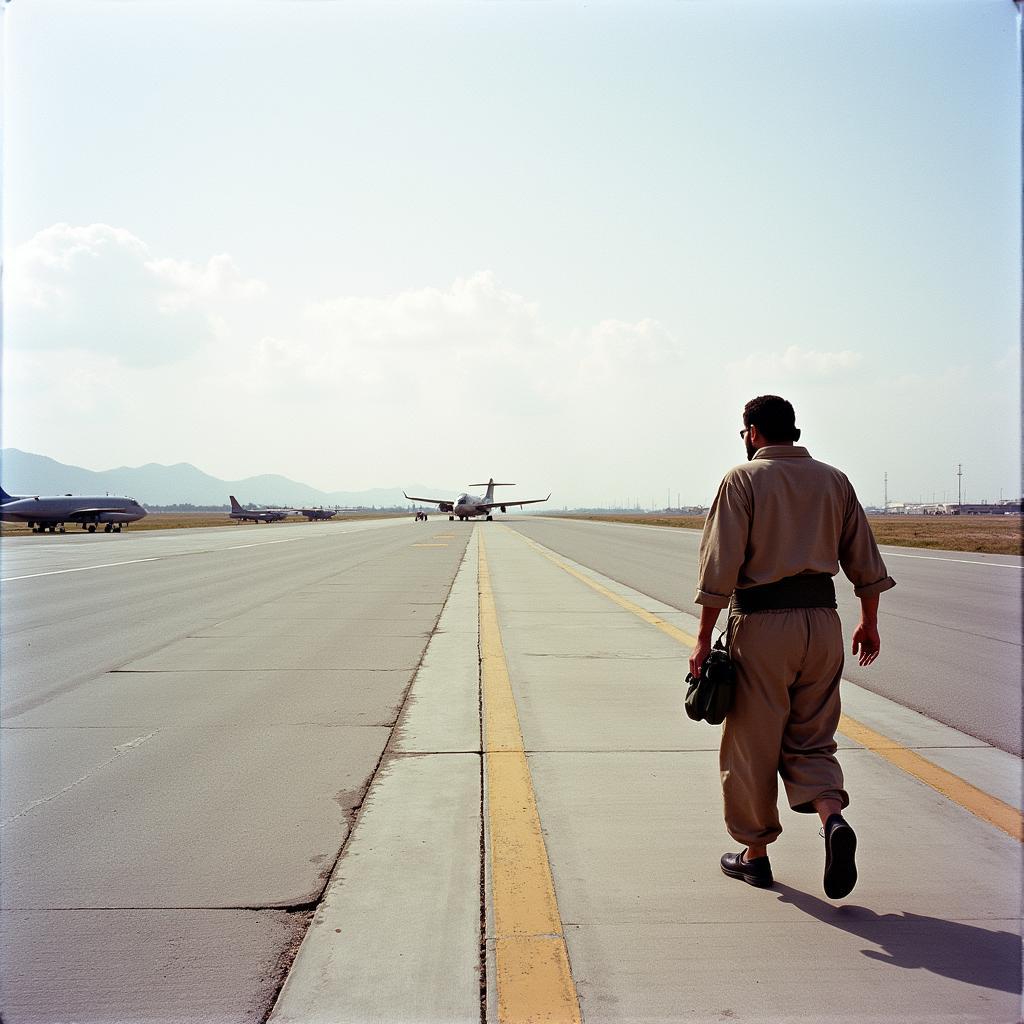Afghanistan’s airports, particularly Kabul Airport, have witnessed decades of turbulence, mirroring the nation’s tumultuous past. From a hub of international connection to a site of chaotic evacuations, these airports stand as poignant symbols of Afghanistan’s complex history.
From Humble Beginnings to International Hub
 Kabul Airport in its Early Years
Kabul Airport in its Early Years
Kabul Airport, officially known as Hamid Karzai International Airport, started as a modest facility in the 1960s. Its construction was spurred by Afghanistan’s desire to embrace modernity and strengthen ties with the world. During this period, the airport facilitated trade, tourism, and cultural exchange, welcoming visitors from across the globe.
The Soviet-Afghan War in the 1980s brought significant changes. The airport became a strategic military base for the Soviet Union, leading to its expansion and modernization. However, this period also marked the beginning of instability and conflict that would cast a long shadow over the airport’s future.
A Nation in Flux: The Impact of Conflict on Afghan Airports
The withdrawal of Soviet forces in 1989 plunged Afghanistan into a civil war, impacting its airports, including those in Kandahar, Herat, and Mazar-i-Sharif. Infrastructure suffered damage, and international flights became sporadic, reflecting the volatile security situation.
 Kabul Airport Under Taliban Control
Kabul Airport Under Taliban Control
The rise of the Taliban in the mid-1990s led to further isolation. Under their rule, Kabul Airport witnessed limited civilian operations, primarily serving as a base for their regime. The international community watched with concern as the once-connected airport became a symbol of Afghanistan’s isolation.
A Glimmer of Hope: Post-Taliban Reconstruction
The fall of the Taliban regime in 2001 brought renewed hope for Afghanistan’s airports. International aid flowed in, facilitating reconstruction and modernization efforts. Kabul Airport underwent extensive renovations, transforming it into a more modern facility capable of handling larger aircraft and increased passenger traffic.
 Kabul Airport After 2001 Renovations
Kabul Airport After 2001 Renovations
This period saw a resurgence of international airlines resuming flights to Kabul and other major Afghan cities. The airport became a lifeline, connecting Afghanistan to the world, enabling economic development, and facilitating humanitarian aid distribution.
The Fall of Kabul and Beyond
The events of August 2021, with the Taliban’s return to power, once again thrust Afghanistan’s airports into the global spotlight. Images of chaotic evacuations from Kabul Airport, with thousands desperately seeking to flee the country, underscored the human cost of the conflict.
The future of Afghanistan’s airports remains uncertain. Rebuilding trust, ensuring security, and attracting international airlines pose significant challenges. Yet, amidst the uncertainty, the resilience of the Afghan people offers a glimmer of hope. Just as they have rebuilt their lives and communities time and time again, they strive to revive their airports, aiming to reconnect with the world and rebuild their nation.
